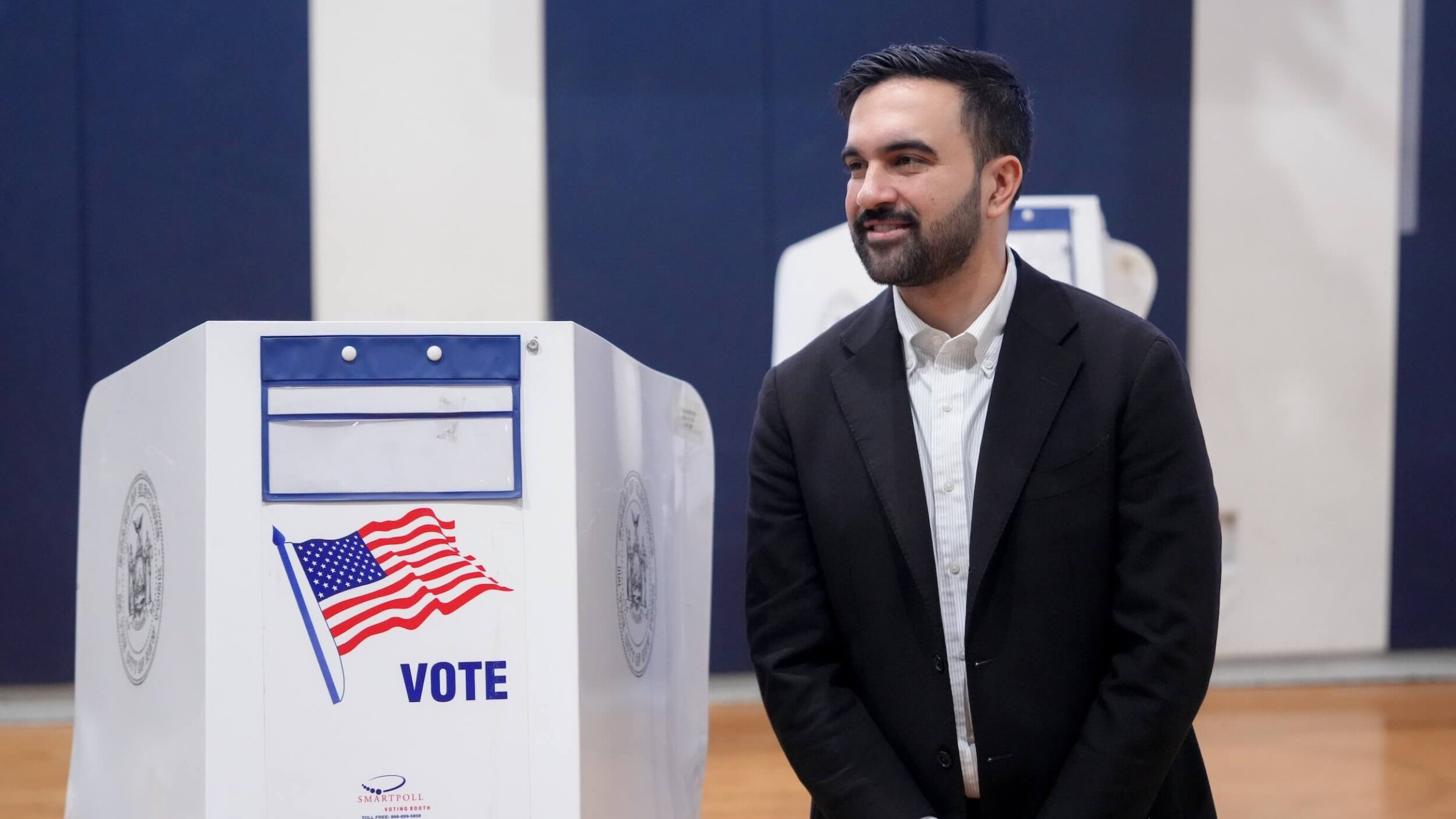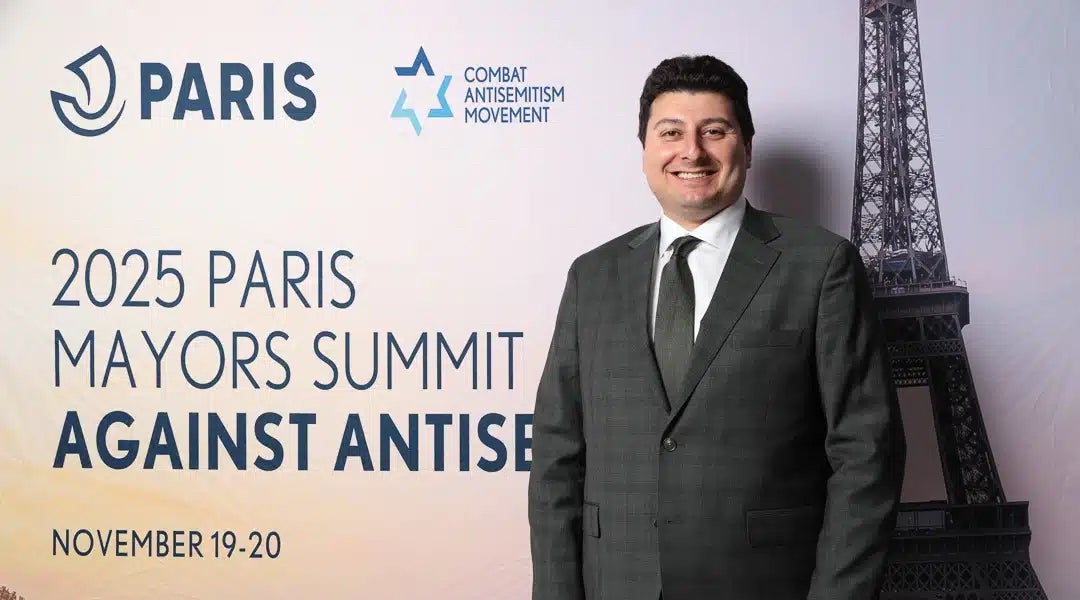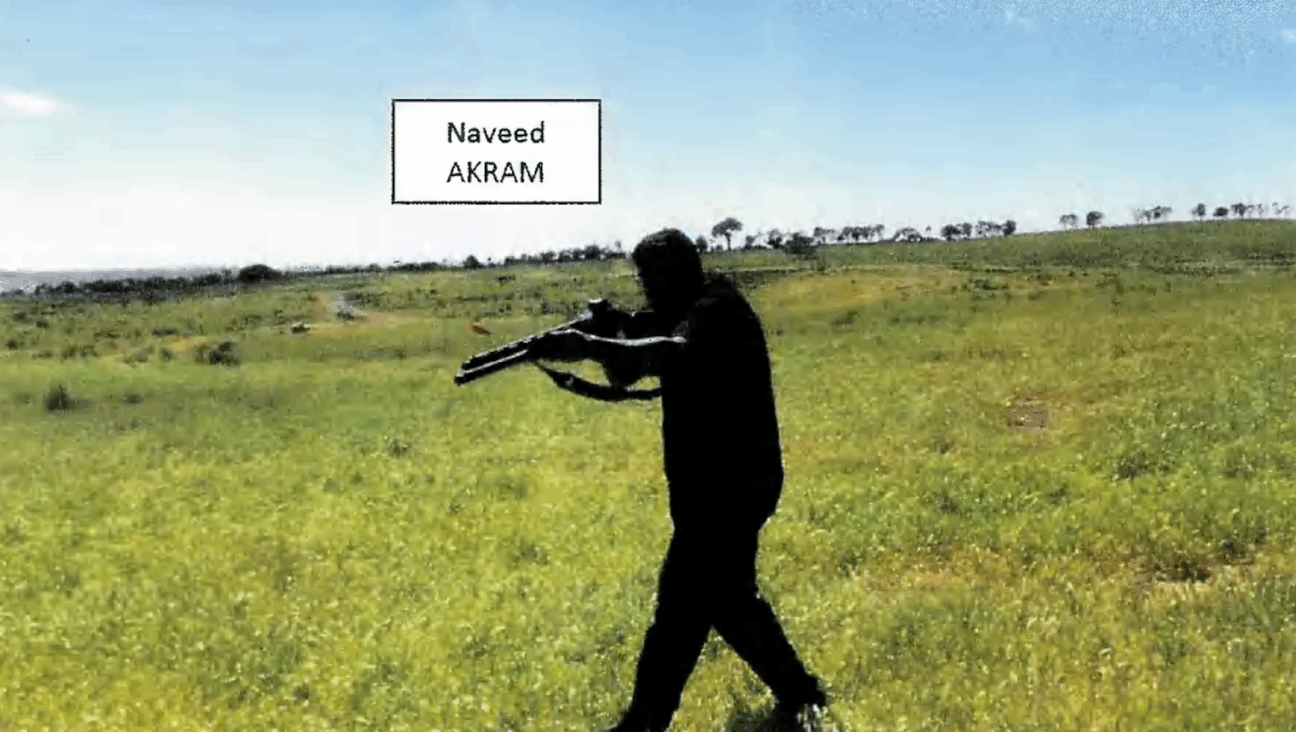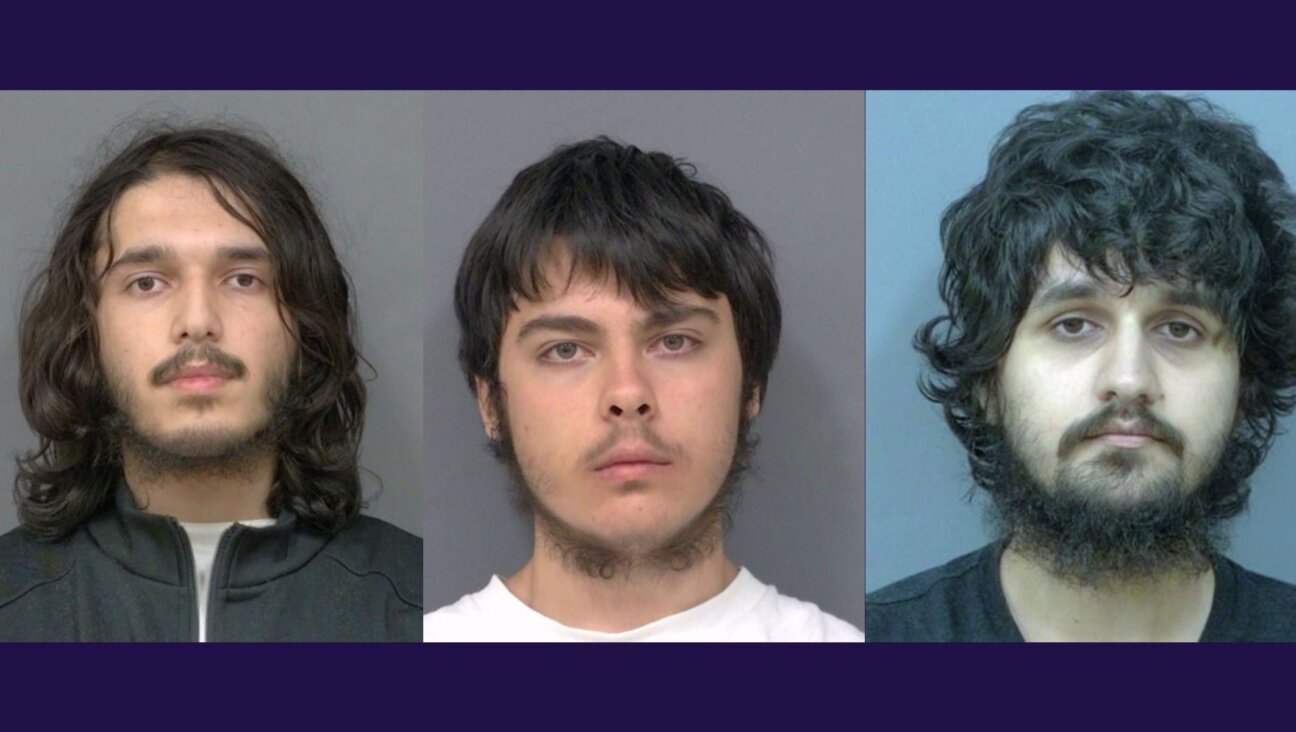New data reveals how Jewish neighborhoods split between Cuomo and Mamdani
Precinct-level numbers show how Andrew Cuomo dominated Hasidic and Orthodox areas, while Zohran Mamdani carried progressive Jewish neighborhoods in Brooklyn and Manhattan

Zohran Mamdani, winner of the New York City mayoral race, on Nov. 4. Photo by Adam Gray/Bloomberg via Getty Images
New data shows just how starkly New York City’s Jewish voters split in last week’s mayoral election — with Andrew Cuomo dominating in Hasidic and other Orthodox strongholds, while Zohran Mamdani swept progressive Jewish neighborhoods in Brooklyn and Manhattan on his way to a citywide win.
The analysis of election districts where at least 10% of voters have Jewish-identifiable surnames doesn’t show how individual Jews voted, but it offers one of the clearest proxies for Jewish political geography. The numbers were shared with the Forward by the Center for Urban Research at the CUNY Graduate Center.
Jews make up an estimated 10% to 15% of the New York City electorate.
In Borough Park, where the Hasidic community turned out at unprecedented levels, Cuomo received 88% of the more than 21,000 votes cast in those almost-all-Jewish districts alone. Just 6.6% went for Mamdani. In Midwood, Marine Park, and Seagate, neighborhoods with a significant Haredi population, Cuomo received between 79% and 65% respectively.
The Williamsburg neighborhoods with a large concentration of members of the Satmar Hasidic community voted largely for Cuomo, giving him 68% of the vote. Mamdani, who was endorsed by the leader of the Satmar Ahronim faction and published an open letter in Hasidic Yiddish, received 25% of the 9,175 voters there.
In the Crown Heights precincts with a significant Chabad presence, Cuomo, who has close ties with the Chabad-Lubavitch sect, received 75% to Mamdani’s 22%.
In other Brooklyn neighborhoods, the pattern completely flipped. In the Park Slope precincts with more progressive and liberal Jews, where turnout topped 17,000, 75.5% voted for Mamdani and 21.6% for Cuomo. The same trend held across Prospect Heights, Clinton Hill, Greenpoint, Fort Greene and parts of Brooklyn Heights, with Mamdani receiving between 60% and 72%.
Across the city, in Riverdale’s Modern Orthodox enclave of Fieldston and the Queens neighborhoods of Kew Gardens Hills and Fresh Meadows, Cuomo also won decisive margins, receiving between 57% and 77% of the vote.
Mamdani performed better in Manhattan than in the June Democratic primary. In the Upper West Side and SoHo Tribeca, the vote split 50%-46% in Mamdani’s favor. In West and Central Village, Cuomo had a 49%-47% advantage. And in Chelsea, Cuomo got 50% to Mamdani’s 45%. Mamdani won decisively in Morningside and Washington Heights. In the Lower East Side, the candidates received 46% of the vote.
The Upper East Side went for Cuomo 2-to-1.
“I’m so proud of the support that we received from the Jewish community,” Mamdani told the Forward on Monday. “It was support that animated every single part of the campaign that we ran.”
Voter turnout in Haredi neighborhoods
The mayoral election may also be remembered less for how Jews voted than how many Haredi voters showed up for the first time.
Election districts in Borough Park, Midwood and Williamsburg saw some of the biggest single-cycle turnout surges. One Borough Park election district jumped from 280 voters in 2021 to 1,046 this year — a fourfold increase.
Concerns about Mamdani’s rhetoric on Israel and his ties with left-wing groups associated with the boycott Israel movement energized many in the community. Local WhatsApp groups buzzed with reminders, rabbis sent out letters, and new voters rushed to register in the final weeks of the campaign.
Mamdani pledged to reach out to the community and assuage concerns by action once he takes office. “I’m committed to being a mayor for every single Jewish New Yorker, just like I’ll be a mayor for every single person that calls the city home,” he said on Monday. “That includes those who have concerns, those who didn’t vote for me, those who didn’t vote at all.”















